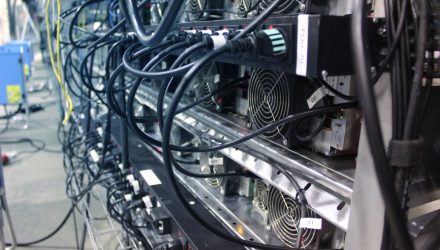Bitcoin mining is an energy-intensive endeavor. That’s not up for debate. Nor is the fact that in the industry’s infancy, miners relied heavily on electric power fueled by traditional sources, such as coal and natural gas.
That wasn’t to the liking of climate activists and investors that demand more environmental, social, and governance (ESG) awareness from bitcoin miners. Data indicate the industry, including some members of the VanEck Digital Assets Mining ETF (DAM), could be listening.
A recent report by Daniel Batten, a venture investor focusing on climate tech and crypto, among other fields, indicated that the energy sources used in bitcoin mining are increasingly green. If nuclear — the cleanest-burning power source — is considered “green,” then the percentage of clean/renewable energy used by bitcoin miners is slightly more than 51%. That’s ahead of the combined 44% for coal and natural gas.
“Sustainable mining companies such as OceanFalls, Blockfusion, Hut8, Iris, Sato, Terawulf, Statar/Lake Parime, Gridshare and HPG are examples of companies that are either 100% powered by hydro or majority-hydro powered,” according to Batten’s report. “The next highest sustainable energy source is Wind, now representing almost 14% of all bitcoin mining power. Companies such as Marathon, with 14 EH of hashrate, the heavy component of which is behind-the-meter wind farms, contribute to this strong showing.”
Marathon Digital Holdings (MARA) is the largest of DAM’s 20 holdings, commanding 15.28% of the exchange traded fund’s roster. Hut 8 Mining (HUT) is the ETF’s third-largest component at a weight of 10% while Terawulf (WULF) and Iris Energy (IREN) combine for over 7% of the DAM portfolio.
Translation: DAM member firms aren’t just proving responsive to embracing renewables to power mining activities. They’re leaders on that front.
Of note to long-term investors viewing DAM as a potential winner by way of increased renewable adoption is the point that that thesis may already be playing out in real time. The BEEST model, which gauges bitcoin mining’s consumer power from a variety sources, indicates as much.
“The BEEST model suggests that the sustainable composition of the Bitcoin network is currently increasing at 6.2% per year. if sustainable energy growth continues to trend upwards, then this is likely to cause the relative percentages of coal, gas and other fossil fuel sources to decline,” concluded Batten.
Interestingly, and this could be notable to DAM investors, is the point that the model assumes that bitcoin miners will consume slightly more renewable industry than the global average.
For more news, information, and analysis, visit the Beyond Basic Beta Channel.
The opinions and forecasts expressed herein are solely those of Tom Lydon, and may not actually come to pass. Information on this site should not be used or construed as an offer to sell, a solicitation of an offer to buy, or a recommendation for any product.







